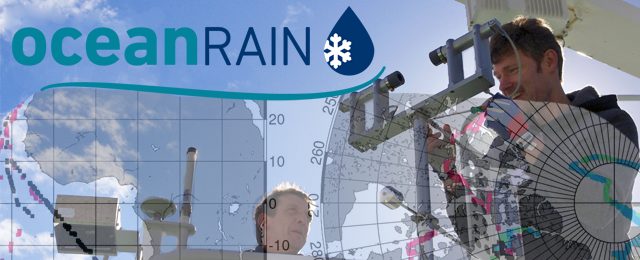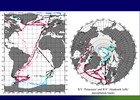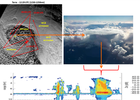Ocean-Rain
Ocean Rain And Ice-phase measurement Network

Systematic high quality oceanic in-situ precipitation measurements are requested on an international science level and are essential for improved understanding and validation of hydrological processes in satellite, re-analysis and model data. OceanRAIN, the shipboard “Ocean Rainfall And Ice-phase precipitation measurement Network” for surface validation is to date the only systematic long-term disdrometer-based oceanic shipboard precipitation data collection effort to establish a comprehensive statistical basis of precipitation for all climate related hotspots over the global oceans including the cold-season Southern Oceans.
OceanRAIN utilizes automated disdrometer systems (ODM 470) capable of measuring precipitation occurrence, intensity and accumulation through minute-based particle size distributions discriminated for rain, snow and mixed-phase precipitation. The ODM 470 was especially designed for shipboard operation under high and frequently varying wind speeds and rough sea states.
The selected research ships do not circumvent high impact weather, allowing for a collection of the full precipitation spectrum including extremes. The fast growing OceanRAIN data base comprises to date more than 5 million minutes of precipitation measurements (> 500.000 non-zero values) equivalent to ten ship years since its start in 2010.
OceanRAIN aims at increasing knowledge about oceanic precipitation and its microphysical properties, improving error characterization of GPM (Global Precipitation Measurement) era precipitation retrievals, adding to the continual improvement of the satellite retrieval algorithms, as well as benchmarking existing satellite-based climatologies, re-analysis and model data. The accumulating data volume can be utilized for statistical and collocation process study applications on different temporal and spatial scales, microphysical studies of rain and snow formation, and yields insight to the point-to-area problem of precipitation.
- More information on OceanRAIN is available via www.oceanrain.org.

 Deutsch
Deutsch English
English




